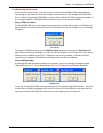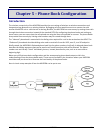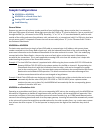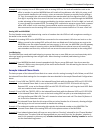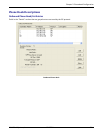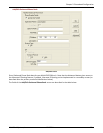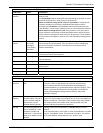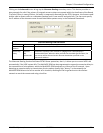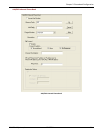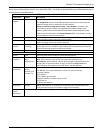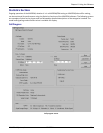
Chapter 5: Phonebook Configuration
Multi-Tech Systems, Inc. MVPGSM 59
Clicking on the Advanced button brings up the Alternate Routing secondary screen. This feature provides an
alternate path for calls if the primary IP network cannot or does not respond within the timeframe of the Round
Trip Delay. Often in cases of failure, call traffic is temporarily diverted into the PSTN. However, this feature could
also be used to divert traffic to a redundant (backup) unit in case one SIP end point fails. The user must specify
the IP address of the alternate route for each destination pattern entry in the Outbound Phonebook.
Advanced button
Alternate Routing Field Definitions
Field Name Values Description
Alternate IP
Address
n.n.n.n Alternate destination for call traffic in case of excessive network delay.
Round Trip
Delay
Default is
300
milliseconds
The Round Trip Delay is the criterion for judging when a data pathway is
considered blocked. When the delay exceeds the threshold specified here, the
data stream will be diverted to the alternate destination specified as the
Alternate IP Address.
The Alternate Routing function facilitates PSTN Failover protection, that is, it allows you to re-route VOIP calls
automatically if the VOIP system fails. The MultiVOIP GSM can be programmed to respond to excessive delays in
the transmission of voice packets, which the MultiVOIP GSM interprets as a failure of the IP network. Upon
detecting an excessive delay in transmission of voice packets (overly high “latency” in the network) the
MultiVOIP GSM diverts the call to another of its channels, allowing the call to go back out to the wireless
network to reach the remote end using a land line.



